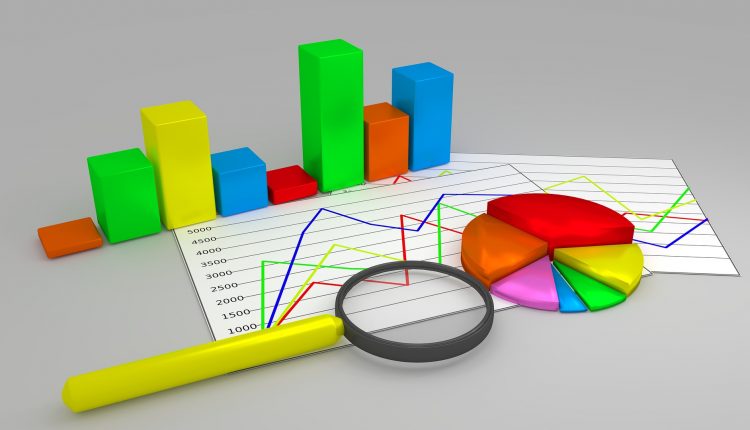Contributed
By Pedro Arellano
It is a toast heard at every wedding, the best is yet to come. When it comes to business intelligence (BI) and artificial intelligence (AI), two technologies that have recently joined forces, this declaration holds especially true. BI and AI are already empowering enterprises to make the data-driven decisions necessary to compete in today’s digital world. Within a few anniversaries, AI promises to shatter the limitations of traditional BI, categorically moving this tool from delivering standardized report writing to actionable business insights.
The Next Wave of BI Innovation
The excitement over this trajectory was palpable at the recent Gartner Data & Analytics Summits held worldwide. At events in Sydney, Dallas and London, there were clear signs that the BI and analytics industry is going through a new wave of disruption, centered around AI and machine learning (ML). In its 2017 study, Augmented Analytics Is the Future of Data and Analytics, Gartner calls this category augmented analytics, defining it as “an approach that automates insights using ML and natural-language generation.”
At the Gartner Summits, many companies, both established and new, demonstrated AI-influenced augmented analytics features such as natural language processing (NLP), recommended insights and automated narratives.
NLP enables users of BI and analytics tools to build reports without a mouse or drag-and-drop. Instead, users can now type or say, “revenue, by quarter, by product category.” Natural language recognition enables these instructions to be declarative or more interrogative, such as, “What were last year’s sales by quarter, by product category?”
Recommended insights go beyond the user’s pre-determined question—like the sales query above—to provide additional data visualizations, all tied to the first requested insight. The intelligence within the tool finds statistically significant related information, thus producing relevant insights without requiring the user to directly ask the question.
Automated narratives use natural language generation to add descriptive and predictive commentary to data-based responses. For example, to the sales query above, the BI system can add descriptive text such as, “This quarter revenue was X, an increase of Y percent over the last quarter. As such, next quarter’s revenue will likely be $Z.” A number of companies are using search-based queries with keywords to automatically build the chart that corresponds to the words the user typed or spoke and produce the corresponding narrative.
Making the Leap from Reports to Insight
While the above capabilities make for impressive demonstrations, they do not advance BI far from its long-standing function within the enterprise—building reports. Therein lies the problem, data analysts have the patience to build reports. Business users and executives do not. Just by speaking into their smartphones, they want to know answers to questions such as, how many units should I order, how many nurses should I hire, or what can I expect my revenues to be this quarter, by product line?
These questions are indicative of how AI can drive transformative change in the world of BI and analytics. In doing so, AI technology will make BI truly smarter—but how?
How Smart is Smart BI
In a recent report called AI Unlocks The Business Intelligence In BI: Close The Insights Gap With AI-Enabled BI, Forrester Research prescribes the path toward using AI to enhance BI. Boris Evelson, VP/principal analyst, Forrester, outlines six ways that enterprises can use AI-enabled techniques and tools to further extend the value of BI, leverage BI for data beyond the data warehouse, automate data preparation tasks, interact with computers in a more natural, cognitive way, democratize the use of advanced analytics, use ML to guide insights discover, and leverage all data—not just structured data, for insights.
BI and analytics solutions that can deliver this ambitious list of capabilities are best positioned to meet the high expectations of business users—thus definitively moving BI beyond its report-building past and into its predictive, prescriptive future. Rather than giving analysts tools for building reports, the AI-augmented BI and analytics platforms of the future will give users and executives the ability to ask questions in everyday business language and receive recommended actions in return.
Why BI Needs AI
Further, Evelson neatly summarizes the need for more business user-friendly BI in the report, noting that, “In most enterprises, data access is a fait accompli, 72 percent of global data and analytics decision makers say that they can access the data they need to obtain insights in a timely manner,” according to the research firm’s paper, Global Business Technographics Data And Analytics Survey, 2017.
However, even the most modern BI tools that make data more accessible still require significant subject matter expertise to find the right data, ask the right question, and interpret the results correctly in order to achieve tangible business outcomes. The Global Business Technographics Data And Analytics Survey states that a majority of data and analytics decision makers—52 percent on the business side and 63 percent on the technology side—say that they plan to recruit people with advanced data skills to support enterprise data-driven initiatives. But even if you did have these data experts, they still feel challenged navigating and interpreting the data.”
As Forrester points out, accessing the data is not enough. Expert skills are still required to choose the right data and ask the right questions. AI can play an important role in identifying the right data and surfacing relevant insights to business stakeholders. This approach lowers the barrier to entry for BI, enabling it to reach past data-savvy analysts to support the broader business audience. AI-augmented “smart analytics,” which network data together and enable insights to be quickly gained by all users, is the next wave of disruption in the business intelligence industry. For business users, this innovation trajectory is ample proof that, indeed, the best is yet to come.
Pedro Arellano is the VP of product strategy for Birst.
Nov2019, AI Applied (Originally published in Software Magazine, Jul2018)



Comments are closed.